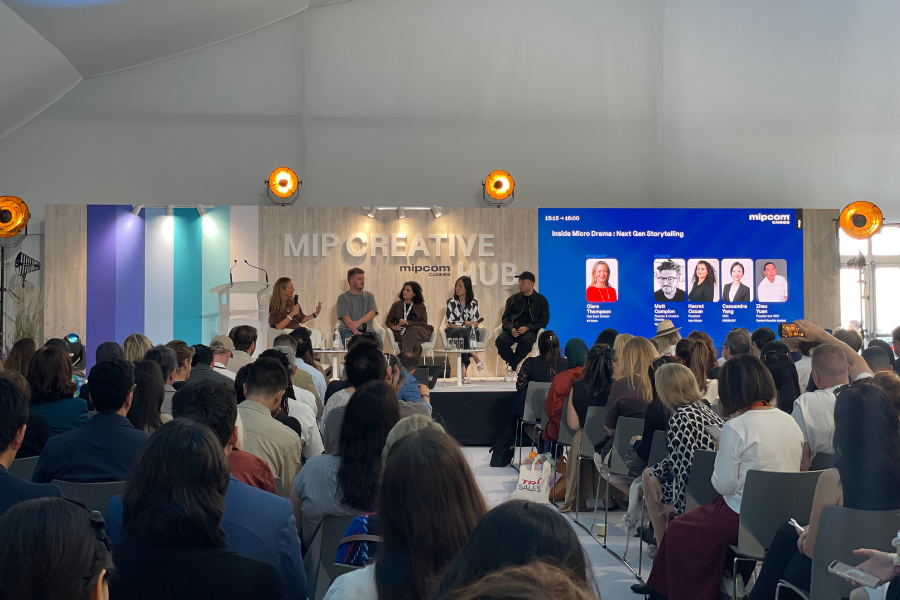At this year’s MIPCOM, K7 Media’s Clare Thompson took the stage to present Inside Microdrama: The Landscape in 2025 & Beyond, a sharp and data-driven look at one of the most explosive content trends of the decade — the rise of vertical and short-form drama.
Speaking to a packed audience of international buyers and producers, Thompson traced the evolution of the microdrama phenomenon, which began as a niche experiment in Asia but has rapidly grown into a global content industry worth billions. “We’ve been tracking the growth of microdrama in Asia for years,” she noted, “but even we’ve been surprised by how quickly it has scaled and diversified across multiple markets in the last 12 months.”
According to K7 Media’s data, the vertical drama boom first emerged in China between 2018 and 2023, where ultra-short scripted content — typically episodes of one to three minutes, often focused on romance — became a cultural and economic force. The format’s turning points included:
2018: First recognition of the vertical drama genre
2019: Breakthrough year in China
2022: Global expansion of Chinese app ReelShort
2023: Local market size tripled, marking a new phase of growth
Today, K7 Media estimates that the Chinese market alone directly employs over 220,000 people, serves 662 million users, and generates more than US$5 billion annually — numbers that underscore the extraordinary speed of the sector’s professionalization.
Thompson’s presentation highlighted how microdrama, originally tailored for domestic audiences and mobile-first platforms, is now being adapted and localized in territories including Europe, North America, and Latin America. Platforms and production companies are experimenting with new narrative forms designed for vertical viewing, integrating social media distribution models and algorithmic engagement metrics.
“What’s fascinating,” Thompson observed, “is how microdrama is bridging the gap between traditional scripted storytelling and the creator economy. It’s not just short — it’s immersive, serialized, and designed to hook viewers within seconds.”
As audience habits evolve, particularly among younger demographics, the intersection between short-form content, social platforms, and monetization models is becoming a key area of innovation. Major streamers and production studios are already exploring ways to incorporate vertical storytelling into their broader strategies, either through branded content or standalone short-form IP.
K7 Media predicts that by 2026, microdrama will consolidate as a hybrid space where creativity meets commerce, allowing emerging talents and established producers alike to test new ideas, genres, and visual languages with minimal risk.
Thompson closed her presentation by emphasizing that the microdrama wave is “not a passing fad, but a new grammar of storytelling” — one that will continue to redefine how stories are written, produced, and consumed in the years to come.










